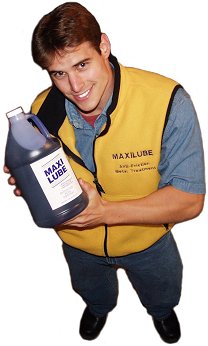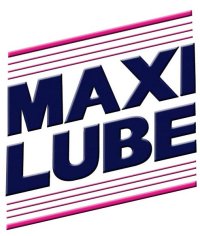|
Maxilube is a concentrated, extreme-pressure metal treatment. Maxilube remains unchallenged in quality because it was specifically engineered to go where motor oils and oil additives cannot: into the metal. Maxilube's patented blend was developed with the understanding that smaller molecules penetrate deep into the pores of metal to combat one major source of contamination. The simple solution of smaller particles ensures that oil and engine filters remain congestion free!
Maxilube's tiny molecules work, first of all because their chemical relationship to metal allows them to bond with the metal; second, because their molecular size is smaller than that of motor oils and leading additives. Maxilube's tiny molecules penetrate the pores in the metal, smoothing jagged metal surfaces. Competitor additives that utilize hazardous solids like Teflon, graphite, sulfide, zinc are left to treat only the oil and not the metal itself. While these particles remain invisible to the naked eye, they are too big to settle into crevasses in the metal, as Maxilube does. Also, because the molecules in these additives are large, they are not chemically compatible with the aluminum alloy engines are made of.
| |
| |
|
Unfortunately, these additives actually do just what they say will. They DO increase lubricity, horsepower, and miles per gallon—temporarily—but cost the customer more in the end due to long term filter and engine damage, which happens imperceptibly. Maxilube's concentrated formula leaves no buildup, and stays inside the metal, even after the oil is removed. In fact, only by deliberately removing a layer of the metal's surface can Maxilube be removed from the metal. Metal treated with Maxilube, then wiped dry, will still show all the signs of having been treated with Maxilube! Simple chemistry, not marketing, gives Maxilube the edge in resistance to wear, heat, and dangerous contaminant deposits.

| |
|
